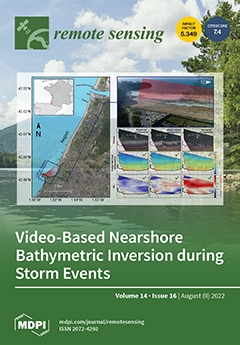The tempo-spatial continuous soil moisture (SM) datasets of satellite remote sensing, land surface models, and reanalysis products are very important for correlational research in the Tibetan Plateau (TP) meteorology. Based on the in situ observed SM, AMSR2, SMAP, GLDAS-Noah, and ERA5 SM are
[...] Read more.
The tempo-spatial continuous soil moisture (SM) datasets of satellite remote sensing, land surface models, and reanalysis products are very important for correlational research in the Tibetan Plateau (TP) meteorology. Based on the in situ observed SM, AMSR2, SMAP, GLDAS-Noah, and ERA5 SM are assessed at regional and site scales in the TP during the non-frozen period from 2015 to 2016. The results indicate that SMAP and ERA5 SM (AMSR2 and GLDAS-Noah SM) present an overestimation (underestimation) of the TP regional average. Specifically, SMAP (ERA5) SM performs best in Maqu and south-central TP (Naqu, Pali, and southeast TP), with a Spearman’s rank correlation (
) greater than 0.57 and an unbiased root mean square error (
ubRMSE) less than 0.05 m
3/m
3. In Shiquanhe, GLDAS-Noah SM performs best among the four SM products. At the site scale, SMAP SM has relatively high
and low
ubRMSE values at the most sites, except the sites at the Karakoram Mountains and Himalayan Mountains. The four SM products show underestimation in different degrees at Shiquanhe. The
values between AMSR2 SM and rainfall are the highest in most study subregions, especially in Naqu and Pali. For the other SM products, they have the highest positive correlations with a normalized difference vegetation index (NDVI). Besides, land surface temperature (LST) has significant negative (positive) correlations with SM products in the summer (other seasons). Through the multiple linear stepwise regression analysis, NDVI has negative (positive) impacts on SM products in the spring (other seasons), while LST shows the opposite conditions. NDVI (rainfall) is identified as the main influencing factor on the in situ observed, SMAP, GLDAS-Noah, and ERA5 (AMSR2) SM in this study. Compared to previous studies, these results comprehensively present the applicability of SM products in the TP and further reveal their main influencing factors.
Full article





